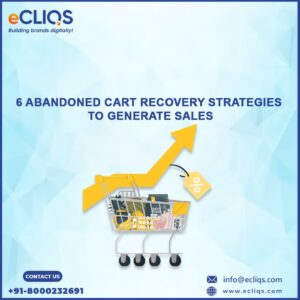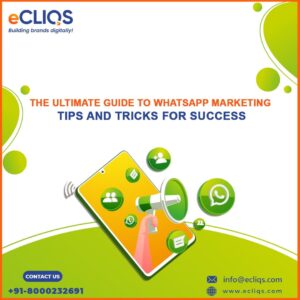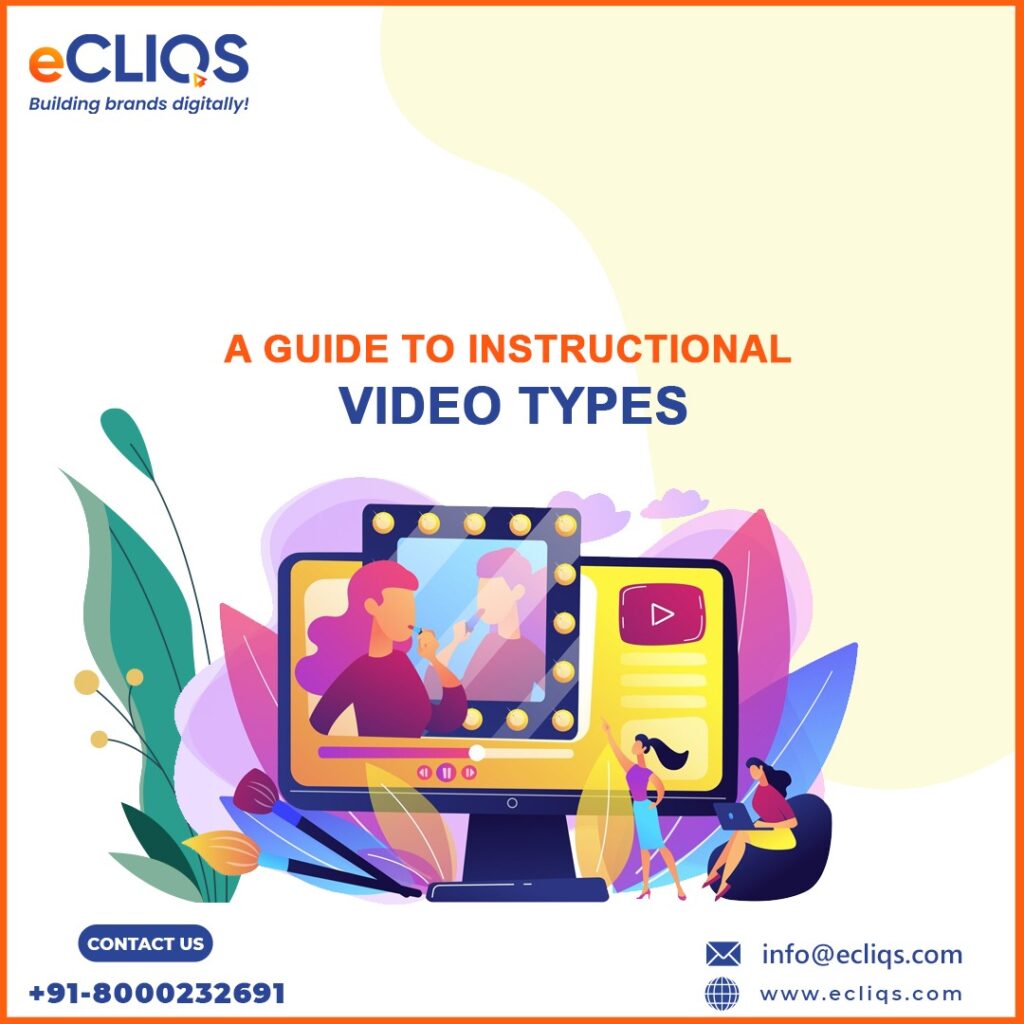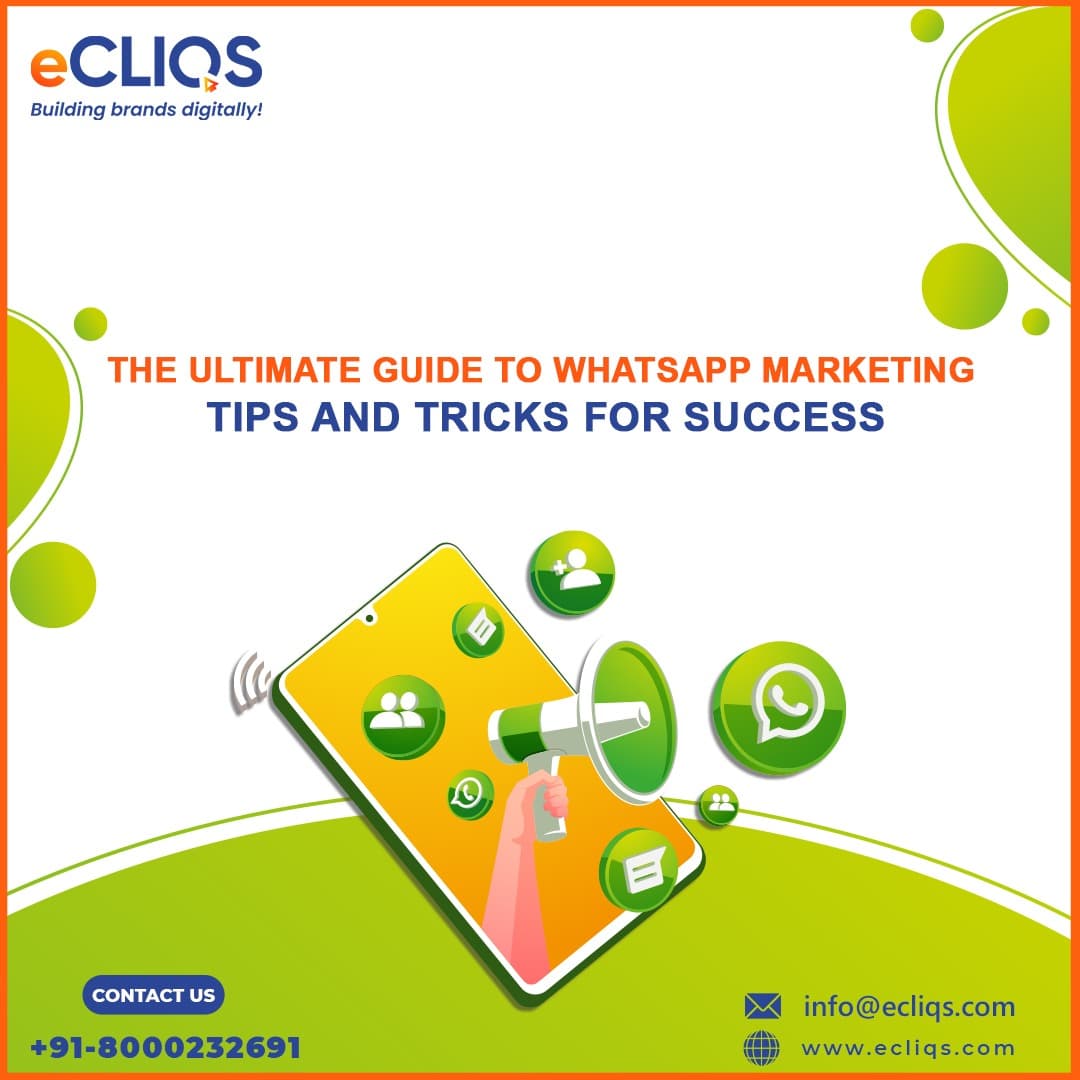6 Abandoned Cart Recovery Strategies to Generate Sales
A shopper visits your website and begins browsing your product catalog. Then they begin adding products to their shopping cart. So far, so good.
However, instead of finishing the checkout procedure, they leave your website without making a purchase. That translates to no revenue for your firm.
Cart abandonment, in which customers add things to their cart and then exit their session without making a purchase, is an all-too-common occurrence in e-commerce.
Abandoned cart recovery has been an ongoing issue for e-commerce companies. Retailers were said to have lost a stunning $4.6 trillion due to abandoned products in e-commerce shopping carts! Retailers have attempted to handle this problem in two ways: avoid and recover cart abandonment.
What is abandoned cart recovery?
Abandoned cart recovery is a sales acquisition approach that involves e-commerce merchants using marketing automation and UX design to convert abandoned carts into sales. The retrieval of abandoned carts involves two steps. First, it seeks to reduce cart abandonment by decreasing friction points in the purchasing experience. Second, it contacts almost-converted clients to urge them to buy things still in their shopping cart. E-commerce firms that try to recover abandoned carts improve conversion rates and obtain a deeper insight into customer behavior.

Benefits of recovering abandoned carts
Typically, when you check your analytics, you will discover that you are converting approximately 3% of your visitors. This indicates that you can convert 30 of every 1000 customers who visit your store. However, the average add-to-cart rate is approximately 8%, or 80 of every 1000 visits. When you compare, you’ll notice that more than 60% of consumers who were interested in purchasing a product abandoned their order. And that’s a huge loss.
Consumers don’t throw items into their shopping carts at random. If they’re choosing to put a product to put in their cart, it’s because they have an interest in it. Consumers who leave carts demonstrate a strong desire to purchase. The difficulty is that something prevented them from completing the process. Customers who abandon carts indicate a strong desire to buy. The problem is that something kept them from completing the process.
Reasons why customers abandon their carts
There are a variety of reasons why shoppers abandon their carts. Understanding these causes can help organizations address underlying issues and increase conversion rates. Here are a few prevalent factors:
- Unexpected costs: During the checkout process, buyers may discover additional prices such as shipping fees, taxes, or hidden charges. High or confusing delivery prices are frequently identified as one of the leading causes of cart abandonment.
- Complicated checkout process: Long and complicated checkout procedures can frustrate customers and lead to abandonment. Excessive information, several checkout form fields, and convoluted navigation can all cause unneeded friction.
- Comparison shopping: Customers frequently compare prices, particularly for more expensive purchases. They may add things to their cart on one website before abandoning it to check pricing, read reviews, or compare possibilities on another.
- Lack of trust: If a website appears unprofessional, has a poor design, or lacks social proof like customer reviews or testimonials, first-time visitors may be hesitant to make a purchase, resulting in cart abandonment.
Strategies to turn abandoned carts into sales
So, how do you recover an abandoned cart?
Here are the fastest, most effective ways to recover abandoned carts starting today.
#1. Create multiple payment options
A single payment option may not persuade customers who have abandoned their carts to complete the transaction. 9% of customers would abandon their basket if they were unable to locate their preferred payment option on the checkout page.
You can fix this by providing a variety of payment alternatives, including credit cards, PayPal, UPI, COD, and other online payment platforms. This allows clients to select the most convenient payment method for them. You may also give a brief explanation of what will happen if they select a specific payment method and why they should choose it over the others.
#2. Guest check-out options
We’ve all been there: we’ve finalized our shopping cart and are ready to check out. Then our hearts drop as we notice the seemingly endless number of fields that must be completed to move to the next stage.
Offering a guest checkout option will appeal to first-time customers, whereas returning customers will recognize the benefit of having an account with you. Offering both alternatives gives your clients optimum flexibility, lowering cart abandonment rates.
#3. Discount offers to trigger conversion
Discounts are the most powerful motivators for conversion. And, since the folks you’re attempting to entice back are already interested, you may give a discount to persuade them to return and complete the orders.
In this situation, you may give a coupon discount to those you are re-targeting using Ads. Alternatively, you may send an email to abandoned clients, offering them a special coupon to complete their shopping within the next few days.
#4. Express scarcity
While discounts are effective, another wonderful strategy is to leverage “scarcity” as a sales trigger. If your prospect were truly interested when they abandoned the order, they will be concerned if the product is out of stock. So, three to five days after abandonment, send an email informing them that the product is still available but is soon to run out of stock.
#5. Retargeting Ads
Retargeting ads are a type of online advertising in which direct-to-consumer firms pay to promote their products to consumers who have previously visited their website but left without purchasing. Retargeting uses browser cookies and IP addresses to track website users’ activity and send advertising. For example, if a person visits your website but leaves without making a purchase, you can build a retargeting ad that appears in the user’s social network feed.
#6. Use social proof to discourage cart abandonment
Successful store owners use a secret approach to reclaim abandoned carts. They rely on fundamental psychological principles, such as social proof. Social proof refers to the reality that people are influenced by others. When we witness others purchasing a thing, we are more willing to try it ourselves.
Conclusion
Abandoned cart recovery has been a concern for e-commerce companies since the beginning. A mix of methods that work best for your business will help you achieve two goals: preventing mass cart abandonment and turning cart abandoners into loyal clients. No doubt rescuing abandoned carts pays well!
The Ultimate Guide to WhatsApp Marketing Strategies: Tips and Tricks for Success
Social media networks and messaging apps have changed the way we communicate. Using these technologies allows firms to reach their customers more easily. WhatsApp is a cross-platform smartphone software that allows users to exchange messages across multiple mobile devices. It also provides enormous opportunities for marketers, enabling quick customer service and highly targeted marketing. Furthermore, it has grown in commercial relevance among enterprises, owing primarily to Facebook’s $19 billion acquisition.
If you want to know how to use WhatsApp marketing to build your business and increase sales, check out our crucial guide. This post will provide in-depth insights into WhatsApp marketing strategy for your business.

What is WhatsApp marketing?
WhatsApp marketing is a new form of marketing in which digital marketers leverage the various functions provided by WhatsApp to target potential clients. WhatsApp is a free mobile software that allows you to chat, call, and video call with other WhatsApp users without incurring SMS or calling charges. Furthermore, it has shown to be an excellent instrument for increasing your sales. If you want to introduce a new product or get as many people as possible to know about your services, Whatsapp marketing is an excellent technique.
Why Should You Use WhatsApp For Business?
The main reason for adopting WhatsApp for business is that it is already widely used by many individuals. Moreover, WhatsApp sends more than 60 billion messages per day. Nonetheless, users of WhatsApp and kindred platforms are eager to engage with businesses.
According to Nielsen’s Facebook Messaging survey, more than 67% of mobile users are predicted to become increasingly comfortable using chat as a means of communication with businesses in the future. Furthermore, around 53% of clients are willing to purchase from a firm with whom they can communicate quickly. If your customers are young, they will find messaging apps more convenient for regular communication.
Messaging programs such as WhatsApp have impressive engagement rates. Almost 98% of mobile texts are opened and seen, with 90% opened within three seconds of receipt. Almost 84% of internet shares occur through private channels such as messaging apps. As a result, even if you use WhatsApp to market your items, your customers will most likely utilize it to increase the reach of your material.
WhatsApp for Marketing allows you to quickly exchange ideas, business news, and promotions. It offers multimedia material, allowing you to exchange films, brochures, links, catalogs, audio, and any other business-related information via WhatsApp. It also enables real-time direct communication with your customers, staff, or audiences.
The Essential Tips to Use WhatsApp for Effective Marketing
1. Develop an engaging brand persona for WhatsApp.
Building a brand character is essential for sticking out and converting sales, and what better method to do so than through WhatsApp? The essential approach to using WhatsApp to promote your business is to customize and create an appealing brand persona. If you intend to use WhatsApp to reach out to your customers, they should be prepared to recognize your brand right away. So, you must design an appealing brand identity that includes your brand’s WhatsApp number.
2. Focus on Relevant Content
Since WhatsApp’s primary function is communicating, it keeps messages concise and impactful. WhatsApp has a 70% engagement rate, which is greater than Facebook. To ensure that your customers are engaged with your company, you should provide them with high-quality material on relevant themes.
Here are some basic tips for starting a successful WhatsApp group:
- Create a group of up to 256 clients.
- Create a distinct group name.
- Make sure the group title corresponds to the name of your firm.
- Develop group guiding policies.
- If you have a brand logo, add that as the group icon.
- Engage users with useful information, freebies, and giveaways.
3. Provide fast customer service.
WhatsApp has a 70% opening rate, which means your message will almost certainly be seen if your client is also on WhatsApp. You must be well-equipped to address customer inquiries. When a customer contacts you, respond quickly. Depending on traffic, ensure that a dedicated person is available to respond to the consumer. Also, make sure his performance is measured.
4. Consumer Research and Feedback.
WhatsApp simplifies the process of gathering valuable feedback from customers once a transaction has been completed. However, you will receive an immediate response from your customers, which will increase openness. It provides an easy-to-use, affordable, and efficient platform for conducting rapid research. WhatsApp is ideal for conducting instant internal discussions within your organization.
Additionally, group discussions with customers, employees, and suppliers can be held on time. Such activities generate a lot of comments and suggestions. With the feedback you receive, you can address their needs and support the products and services you provide. Building imaginative and interesting polls allows you to quickly communicate with your customers.
5. Build a supportive and interactive community of individuals.
Today, there are thousands of active WhatsApp groups, numerous groups include professors, students, environmentalists, socialists, housewives, corporate groups, and so on. It also allows them to easily share films, files, songs, images, and even contacts via a different platform.
6. Establishing or positioning the brand.
Consumers prefer personalized service over professional or formal support. If you provide quick and competent customer service, you are more likely to gain client involvement. They will be pleased if their questions are answered based on their preferences, resulting in higher client satisfaction rates.
7. Continuous communication and customer support
WhatsApp was created for mobile devices but is also compatible with desktop devices. As a result, you may use it with other desktop programs to provide excellent customer assistance. As a result, your clients can reach you swiftly, and you can respond immediately. In terms of communication, consumers prefer message-based follow-ups over direct phone calls. Nonetheless, clients are unable to answer calls regularly; a message will not irritate them as much. So, start interacting with your potential and present clients via WhatsApp. Sending a short message via WhatsApp may provide you with an immediate reaction, as opposed to promotional emails.
Miscellaneous Service: Many growing and established businesses have embraced this ready-to-use messenger as the simplest instrument for expediting customers. You may now use WhatsApp to obtain party passes, request flower delivery, go shopping, or use courier services.
Receiving Orders on WhatsApp: Many eateries and food establishments have started delivering their services over WhatsApp. However, they not only present the menu but also allow you to place an order with a single text message. Thus, consumers can express their preferences directly.
Medical Consultation: Nowadays, family doctors have started delivering medical consultations over WhatsApp. Yes, it cannot replace an in-person visit, but you can always text your doctor and inquire about common medical concerns. Aside from that, medical establishments now accept photographs of prescriptions to provide medications. This is not the same as going to the doctor in person, but it will save time.
Government Services: Nowadays, many people are engaging in the use of cell phones. Furthermore, employing an app like WhatsApp will reach many users, helping to raise awareness among people. So you may start working like this.
WhatsApp Marketing Services
WhatsApp is the ideal platform for creating strategy-based marketing that targets a small audience. There are numerous third-party WhatsApp marketing tools and services available. These apps which are official partners of WhatsApp can provide numerous paid services with proper checks on communication from Meta. Here, we have a collection of commonly used WhatsApp Marketing services that help assure the success of a business strategy.
WhatsApp Bulk Messages: The official Whatsapp partners allow you to send WhatsApp bulk messages to a large audience where you can personalize a few fields like name etc. Before sending these messages Meta (Whatsapp’s parent company ) checks and approves the templates to ensure nothing that is not allowed is sent. You can send messages in a variety of formats such as video, audio, text, GPS hotspots, and contact cards to a large number of WhatsApp users.
Create automated workflows: You can create automated flows where you can create automated replies for customer replies and hence handle many customer queries in one click. This can also help you in qualifying your leads.
Engage with an existing audience: By sending regular messages related to new services/plans or even for payment information businesses can regularly engage with their audience thus increasing their brand loyalty and lifetime value.
Track Customer Journey: You can track customer journeys through their responses and queries through proper analytics and a dashboard available.
Conclusion
In a nutshell, WhatsApp is an excellent communication tool that can benefit every organization. However, it is effective for organizations with a global and local consumer base. If you have an international consumer base, you can expand that niche by connecting with them efficiently via WhatsApp. We hope you find this article useful in learning how to create a WhatsApp Marketing Campaign that efficiently targets and converts.
A Guide to Instructional Video Types
Instructional films are an excellent way to provide employees and students with learning, training, and educational content. Videos are more interesting than textbooks and more visually appealing than emails, allowing viewers to absorb and retain information more effectively. This makes them immensely more successful as a training tool, and they can also be used as terrific evergreen content to increase your digital marketing ROI and attract new clients. Choosing the appropriate instructional video to convey your message is nearly as crucial as the message itself. Depending on the content you want to provide, the proper style of instructional film will be more effective than others. However, instructional videos may do more than just educate viewers; they can also help you build your business. Businesses that provide educational information to potential clients can establish themselves as industry experts and gain the trust of their audience. Furthermore, including video content on your website might help to increase traffic and social media engagement.

What is an instructional video?
In a word, instructional films are visual aids that show viewers how to perform a task or explain a subject, technique, or concept. The finest instructional films integrate visual effects, text, and audio to create an engaging and visually appealing experience. An educational video may also include animations, visuals, and on-screen annotations to emphasize key points and make the content more focused and consumable.
Of course, the benefits of instructional films aren’t just for the viewers; they’re also quite simple (and enjoyable) to create. Once you begin generating your instructional films, you may find that they can help simplify your concepts, ideas, and processes while making both the teaching and learning process much simpler.
The most popular sorts of instructional videos
The beautiful thing about instructional videos is that they may cover any topic. For example, an instructional film could be a product demonstration, a how-to guide, a software tutorial, or a safety process – the choices are limitless!
So let’s take a deeper look at some of the most popular sorts of instructional videos.
1. Micro-videos
Microvideos are quick educational videos that focus on a single topic without getting into too much detail. The phrase “micro-video” is essentially a fancy name for “short video.” They are intended to be extremely brief, usually lasting less than a minute. Micro-videos, like many other sorts of video content, can be extremely polished or very informal, depending on its purpose and intended audience. Furthermore, micro-videos can convey a specific message without overloading viewers with information. Microvideos help viewers learn a new skill or gain information on a certain subject rapidly because they focus on a single topic.
When should you utilize a micro-video?
You can use a microvideo to teach or explain a simple idea in a few stages. For example, a micro-video could be ideal for demonstrating how to use a new software function. More difficult notions, on the other hand, may be divided into logical steps, each with its micro-video. Some teachers avoid long-form videos since many feel that micro-videos provide the same results but with higher audience engagement. This method also gives you more control over the speed of learning and makes the knowledge more digestible. Microvideos are commonly used to teach a skill, but they can also be used to communicate knowledge or information, as well as to educate soft skills.
2. Tutorial videos
Tutorial videos (also known as “how-to” videos) are the most common instructional approach for teaching a procedure or providing step-by-step instructions. They are typically two to ten minutes long. Unlike micro-videos, lesson videos explain more complex processes and frequently provide detailed instructions and follow-along help. Interactive components, such as quizzes, can help catch the viewer’s interest and make tutorial videos better. Understanding the goal of the video and who will be seeing it is critical to determining how polished it should be. For example, if you’re creating a lesson film for an audience outside of your organization, such as consumers or clients, you’ll probably want to give it a more professional appearance. However, if it is a lesson video for staff training or internal communication, it can be as professional or informal as necessary.
When should you utilize a tutorial video?
Tutorial videos, like micro-videos, can teach almost anything, and there are no restrictions on when or how they should be used. Essentially, if you ever need to teach a procedure or give essential knowledge on how to enhance talent, a tutorial film will be really useful.
3. Training videos
They are an effective tool for developing employees’ professional skills and addressing interpersonal issues that are critical to sustaining a healthy work environment. While there are some obvious parallels with tutorial videos, training videos are mainly focused on enhancing job-specific abilities and covering work-related themes like compliance and health and safety training. Training videos are also more likely to include footage of real individuals, which can be used to generate real-life scenarios. This may also assist the trainer in connecting with the trainees. However, like with other video content, there are no established guidelines, therefore this is not required when creating a training film. Visual aids such as animations and graphics can be equally effective in generating entertaining and instructive training movies. The most important thing to remember is that the greatest training videos will assist firms in improving employee knowledge and performance while fostering a positive culture of learning and development.
When to use a training video?
Employers, trainers, and HR departments may use training videos to onboard new employees, introduce new processes or technology, and provide refresher training. Businesses can, however, use training videos to teach staff about any topic or process. This form of instructional video is frequently utilized in settings when live video is appropriate, as the interpersonal connection can improve knowledge retention.
4. Explainer videos
An explainer video is similar to a modern-day lift pitch, and the best ones are short (30 seconds to a few minutes). They’re also intended to instantly attract the viewer’s attention while simplifying ideas, products, and services. These movies are a popular approach for businesses to present and explain complicated (and sometimes simple) subjects in an interesting and visually appealing manner. While not necessarily necessary, some explainer videos will incorporate animation, graphics, and voiceovers to help capture the viewer’s attention and impart information. One of the key advantages of explainer films is their ability to convey information in a concise, engaging, and amusing manner. Explainer videos may also be quickly shared on social media sites, making them a low-cost and effective approach to reaching a big audience.
When to utilize an explanatory video?
Businesses use explainer movies to present a new product or service to prospective clients, helping them understand how it works and why it’s valuable. It’s a basic concept, but after you’ve completed a well-polished explainer film, there are numerous ways it may be used and distributed. For example, effective explainer videos can be used as marketing material in advertisements and on social media. Businesses may also add explainer movies on their website, making them the first thing prospective buyers see when shopping online.
5. Lectures or Presentations
A recording of your lecture or presentation is an efficient approach to increase the reach of your material and allow people to learn at their own pace. Viewers can now pause, rewind, or fast-forward to areas they may have missed or did not completely grasp the first time. By offering this level of flexibility, you can make your instructional content more accessible while fostering a better grasp of the material. This type of instructional film does not have to be complex to develop. You could, for example, construct a simple visual and audio presentation using only your slides and voice. Or, for a more professional appearance, you could set up a camera (or cameras if you intend to record your own TedTalk!) to accompany your presentation.
When should you use a lecture or presentation video?
When you wish to make it available to a larger audience or share it with folks who were unable to attend the live event, lecture, or presentation videos come in handy. By doing so, the users can attend your lecture or view your presentation whenever they want and feel. Also, it helps build trust in your audience when you provide them with the material.
6. Screencasts
Screencasts are videos generated using screen recordings to teach or share knowledge. You could even build a screencast that shows how to use a screen recording to generate an instructive film! While screencasts are not a distinct sort of instructional video, they can be used to generate any of the videos discussed in this article. They are typically shorter, more informal, and aimed at a smaller audience than instructional videos.
The advantage of screencasts is that they allow the instructor to swiftly extract material from their screen to answer a question or clarify a concept. Many screencasts are called “disposable” videos since they may be created quickly and with little production value. They serve a specific purpose for a limited time. However, this does not mean that screencasts cannot bring long-term benefits. For example, a well-crafted software lesson video may be valuable for months (or even years!) and might be used to onboard new team members or educate consumers.
When should you utilize screencasts?
Screencasts are ideal for informally providing brief instructions. For example, if you know your audience will be limited and the stakes are low, creating a brief screencast is an excellent method to visually express a concept, answer a question, or solve a problem.
Avoid these instructional video blunders.
While generating videos is simple in many respects, there is still room for error. If you’ve read this far, you should be ready to create your first instructional video; but, you should also consider the most typical mistakes individuals make so that you can prevent them.
1. Focusing on equipment: If you are just getting started, don’t get distracted or overwhelmed by fancy equipment. It is far more vital to learn the fundamentals and focus on honing your video-making skills.
2. Striving for perfection: While it can be difficult to let go of the need to perfect every detail, being a perfectionist can also cost you a lot of time, and we believe it is far better to release an engaging and creative video than to spend an unnecessary amount of time on things that most people will not notice.
3. Targeting the incorrect audience: Make sure you understand your audience and design your video with them in mind.
4. Explaining stages too broadly: The goal of an instructional film is to give clear, concise, and explicit directions. So, make sure to clearly explain each step and provide graphics to help everyone comprehend.
Final words
With these instructional video formats in mind, you may begin producing your own. If you’re experiencing problems, remember that you should have a clear goal in mind for your film. Consider writing a narrative and, for certain sorts of instructional videos, a storyboard. This will help you stay focused and deliver a consistent message to your audience. That will help you hold their attention and ensure that your message resonates.
References
- https://elearningindustry.com/what-are-instructional-videos-examples-you-can-incorporate-in-video-training-program
- https://www.viostream.com/blog/instructional-video-types
- https://www.ispringsolutions.com/blog/instructional-video
- https://www.uscreen.tv/blog/instructional-videos/
- https://animationexplainers.com/instructional-video-types-guide/
- https://scribehow.com/library/instructional-video
.
A/B Testing of Landing Pages for Better Online Ads Results
When marketers develop landing sites, write email copy, or design call-to-action buttons, it’s easy to use our instincts to forecast what will compel consumers to click and connect. However, conducting A/B testing is far superior to making marketing decisions based on a “feeling,” as this might hurt outcomes. Continue reading to learn what is A/B testing, why it is helpful, and how you can do it!

What is A/B Testing?
A/B testing, commonly known as split testing, is a marketing experiment in which you divide your audience to test variations on a campaign and see which works better. In other words, you can present version A of marketing content to one-half of your audience and version B to the other.
Let’s go over how A/B testing works so you don’t make false assumptions about what your audience prefers.
How does A/B Testing work?
To conduct an A/B test, you must produce two distinct versions of the same piece of content with modifications to a single variable.
Then, you’ll display these two versions to two audiences of equal size and compare how they performed over a set amount of time. A/B testing allows marketers to compare how one version of marketing content performs against another.
A/B Testing in Marketing
A/B testing has numerous advantages for a marketing team, depending on what you choose to test. There are an infinite number of items you may test to evaluate the total influence on your bottom line.
Here are some elements you may want to test in your campaigns:
- Subject Lines
- CTAs
- Headers
- Titles
- Font and Colours
- Product Images
- Blog Graphics
- Body copy
- Navigation
- Opt-in forms
Of course, this list isn’t complete. Your alternatives are limitless. Above all, these tests are beneficial since they are low-cost and high-reward.
A/B Testing Goals
A/B testing can reveal a lot about how your target audience behaves and responds to your marketing effort. Not only does A/B testing assist you in understanding your audience’s behavior, but the results can also help you set your next marketing objectives. Here are some frequent aims that marketers have for their businesses while conducting A/B testing.
Increased website traffic: You’ll want to employ A/B testing to assist you in identifying the perfect URL and title for your landing page/website so you can attract your audience’s attention. Testing different blog or web page titles and URLs can affect the number of visitors who click on the hyperlinked title to visit your site. This may enhance website traffic. A rise in online traffic is a positive thing! More traffic usually leads to more sales.
Higher conversion rate: Not only does A/B testing increase traffic to your website, but it can also improve conversion rates. Testing alternative placements, colors, and even anchor text on your CTAs might affect the number of people who click them to reach a landing page. This can improve the number of users who fill out your website’s forms, provide you with their contact information, and “convert” into leads.
Lower Bounce Rate: A/B testing can assist you figure out what’s driving visitors away from your website. Perhaps the feel of your website does not resonate with your target demographic. Perhaps the colors clash, leaving your target audience with poor taste. If your website visitors quickly depart (or “bounce”), experimenting with different blog post openers, fonts, or prominent images will help you retain them.
Better Product images: You know you have the ideal product or service to offer your target client. But how do you know you’ve chosen the best product image to represent what you have to offer?
Use A/B testing to identify which product image will best capture the attention of your target audience. Compare the photographs and select the one with the highest sales rate.
Lower Cart abandonment: E-commerce enterprises report that 70% of clients leave with things in their shopping carts. This is known as “shopping cart abandonment” and is, of course, bad for any online retailer. Testing alternate product images, checkout page styles, and even where shipping costs are shown might help to reduce abandonment.
Launching test
Let’s say the landing page is ready and there is nothing to do, then launch the test. Let’s launch it step by step.
1. First, ask yourself this question: What could be the cause of a low conversion rate? Sometimes it’s the color of a call to action button. Sometimes it’s a headline or an image. There are numerous approaches to determine what is creating the vicious loop of no conversions, such as heat maps- A heat map depicts a visitor’s interaction with your website. A heat map indicates which elements of a landing page are the most appealing for your users.
2. Prepare two separate versions of your effective landing page. Remember that you must make them differ by only one element to conduct a credible A/B test.
3. Take your time selecting your target audience. Also, remember that it’s usually preferable to test on a new group of clients; they won’t have any prior experience with your website, so their behavior will be clean and dependable.
4. Select the source of traffic. It might be Facebook, Google search, email, and so forth. Now, start testing!
5. Choose a winner! Analyzing the results is straightforward. Simply check which combination resulted in a higher conversion rate. There is only one modification, so you’ll know right away what caused it.
6. Take another test! We hope you did not assume this was the end! If your first A/B test was successful, it just means there should be more, because with each test, your landing page improves! And as it improves, it achieves higher conversions, CTR, and, finally, sales! Remember, A/B testing is not a single action, it’s an ongoing process. A/B testing makes you the effective landing page you are looking for.
Final Words
A/B testing allows you to discover the truth about what content and marketing your audience wants to see. If you want to learn more about how A/B testing can help your business increase conversions, please contact us online or drop us an email at info@ecliqs.com to speak with a strategist.
We look forward to hearing from you.
References:





